5 Best Grass Types for Idaho
BY AUSTIN GEIGER | APRIL 29TH, 2023 | IDAHO, LAWN CAREPicking out a new grass type is never easy. Whether it’s because the old grass died or you just want a change of pace, it can be difficult to know what type of grass will grow best in your area when you need a new one. This article discusses the best grass types for Idaho to help you pick out your new lawn in the Gem State.
In this article, we’ll cover:
- Warm-Season vs. Cool-Season Grasses
- The Best Grass Types for Idaho
- FAQ About Idaho Grass Types
- Choose Plant and Grass Varieties for Your Idaho Landscape
Warm-Season vs. Cool-Season Grasses
Idaho is in the cool-season zone when it comes to grass types. This means that the best grasses for this area are cool-season grasses as opposed to warm-season.
The main difference between warm-season and cool-season grasses is that cool-season grasses grow best between 60 and 75 degrees Fahrenheit, while warm-season grasses grow best between 75 and 90 degrees.
Another difference between warm and cool-season grasses lies in their growing seasons. Cool-season grasses experience most of their growth in early spring and autumn, whereas warm-season grass grows the most in summer.
The Best Cool-Season Grass Types for Idaho
1. Kentucky Bluegrass
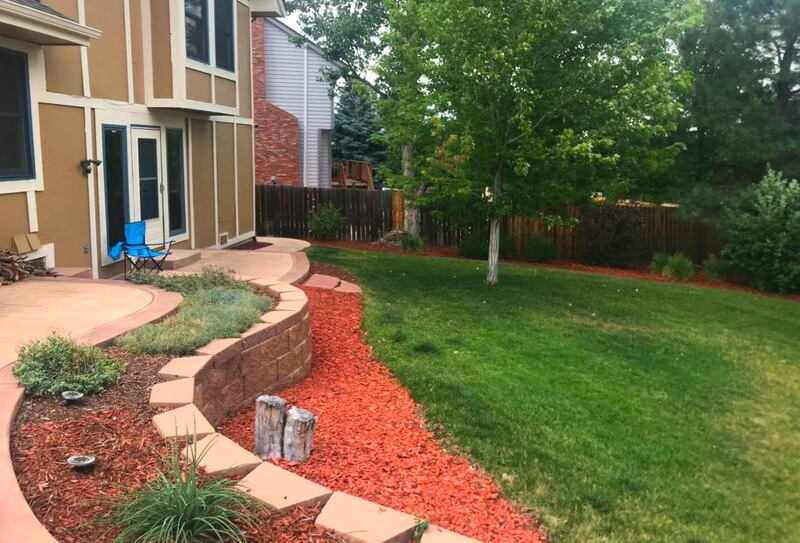
Photo Credit: Brenda Ryan / Wikilawn
If you’re looking for a new grass type, Kentucky bluegrass is a good choice. Despite its name, it has a lovely dark green color, which, combined with its fine texture, makes it a beautiful grass that looks good in just about any lawn.
Kentucky bluegrass has decent tolerance for drought and foot traffic tolerance, but low tolerance for shade, so it’s a good choice if you have a sunny yard and plan to use your outdoor space semi-regularly. Keep in mind that it’s a high maintenance grass, so you’ll need to give it lots of attention.
Classification: Cool-season
Spreads By: Rhizomes
Shade Tolerance: Low
Drought Tolerance: Moderate
Foot Traffic Tolerance: Moderate
Maintenance Needs: Moderate mowing and high fertilization
Mowing Height: 2.5 to 3.5 inches
Potential for Disease: Moderate to high; prone to dollar spot, leaf spot, necrotic ring spot, summer patch, and stripe smut
Potential for Pests: Moderate
Soil pH: 6 to 7.5
Soil Type: Moist but well-drained, fertile soil
Other Notes: Kentucky bluegrass is the most commonly used lawn grass in the United States
2. Perennial Ryegrass (Lolium perenne)
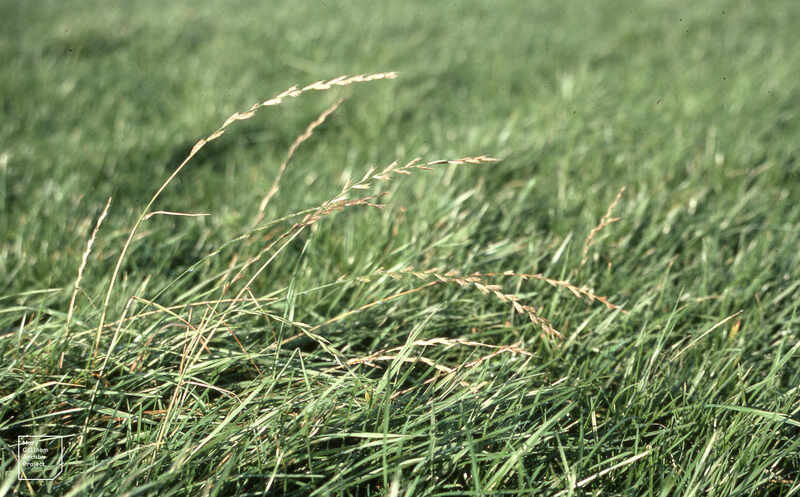
Photo Credit: Dr Mary Gillham Archive Project / Flickr / CC BY 2.0
Perennial Ryegrass is a bunch-type cool-season grass with a light green color and a fine texture that makes it pleasant to walk on. It can be grown by itself, but it’s also commonly used in mixtures with other grass seeds, such as Kentucky bluegrass, due to perennial ryegrass’ quick germination and turf formation. It’s also good for overseeding existing lawns for the same reason.
Perennial ryegrass has the highest foot traffic tolerance of any cool-season grass, making it a great choice for homeowners who like to have a lot of outdoor activities, such as barbecues or games of catch. Its shade and drought tolerance are unfortunately low, however, so keep an eye on this grass and make sure it’s getting plenty of sun and water.
Classification: Cool-season
Spreads By: Bunch-type
Shade Tolerance: Low
Drought Tolerance: Low
Foot Traffic Tolerance: High
Maintenance Needs: Moderate mowing and fertilization
Mowing Height: 1.5 to 2.5 inches
Potential for Disease: High. Common diseases include leaf spot, gray leaf spot, and red thread
Potential for Pests: Moderate
Soil pH: 5 to 8, prefers 6 to 7
Soil Type: Prefers good drainage and fertility
Other Notes: Best foot traffic tolerance of any cool-season grass
3. Tall Fescue (Festuca arundinacea)
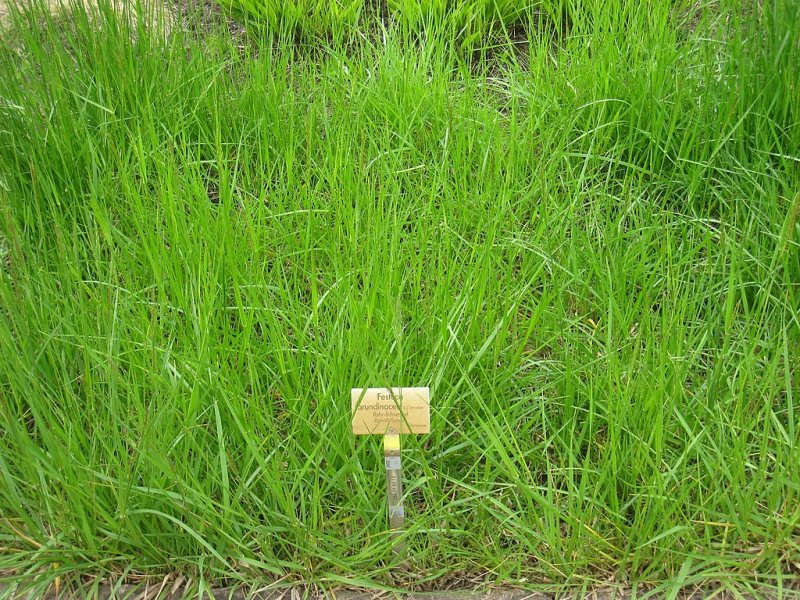
Photo Credit: Daderot / Wikimedia Commons / Public domain
Tall Fescue grass is a hardy cool-season grass with a medium to dark green color and a coarse texture. It grows very quickly, meaning that it requires frequent mowing, but it unfortunately can’t repair damage easily. It has good tolerances across the board, especially drought tolerance, and has a deep root system, making it ideal for homeowners who need a tough grass that can handle conditions others can’t.
Classification: Cool-season
Spreads By: Bunch-type with short rhizomes
Shade Tolerance: Moderate
Drought Tolerance: Moderate to high
Foot Traffic Tolerance: Moderate
Maintenance Needs: Frequent mowing
Mowing Height: 2 inches, mow once grass reaches 3 inches tall
Potential for Disease: Low when properly maintained
Potential for Pests: Moderate
Soil pH: 5.5 to 6.5
Soil Type: Prefers clay soil with good drainage
Other Notes: Tall fescue has the highest heat tolerance among cool-season grasses
4. Fine Fescue (Festuca sp.)
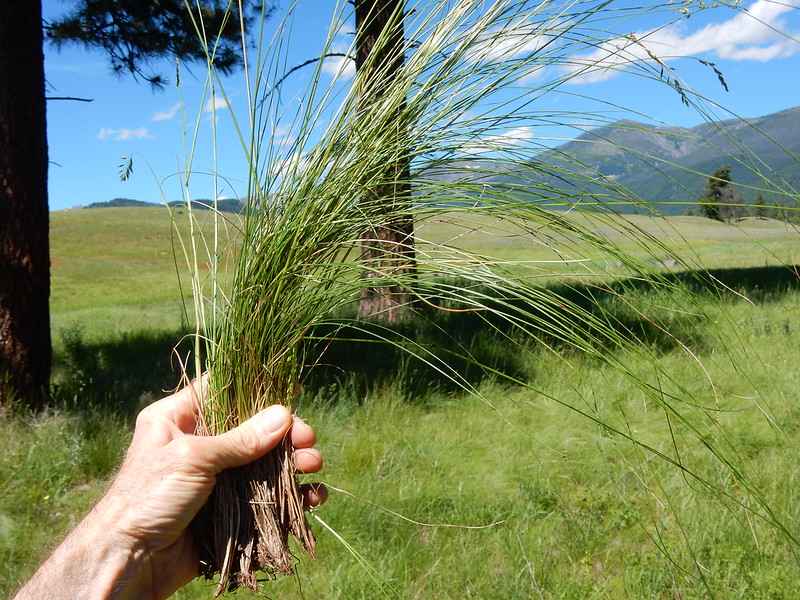
Photo Credit: Red Fescue (a type of fine fescue) Matt Lavin / Flickr / CC BY-SA 2.0
Fine fescue grass is a cool-season grass with a nice gray-green color and a fine texture. Its tolerances vary among cultivars, and it’s a low-maintenance grass with good disease and pest resistance. It grows slowly and, like tall fescue, doesn’t self-repair, so be careful with it.
Fine fescue is a good middle-of-the-road grass for someone who likes options. Whatever the conditions in your outdoor space, fine fescue’s varied tolerances among its cultivars means that there’s likely one for you. It’s particularly known for its shade tolerance, boasting the best out of all cool-season grasses, making it a good choice for a shady lawn.
Classification: Cool-season
Spreads By: Depends on the cultivar; some spread by rhizomes while others are bunch-type
Shade Tolerance: Moderate to high, depending on cultivar
Drought Tolerance: Moderate to high, depending on cultivar
Foot Traffic Tolerance: Low to moderate, depending on cultivar
Maintenance Needs: Low fertilization and mowing needs
Mowing Height: 2.5 to 4 inches, depending on cultivar
Potential for Disease: Moderate
Potential for Pests: Moderate
Soil pH: 6 to 6.5
Soil Type: Prefers dry soil
Other Notes: Fine fescue has one of the finest textures out of all turf-type grasses
5. Buffalograss (Bouteloua dactyloides)
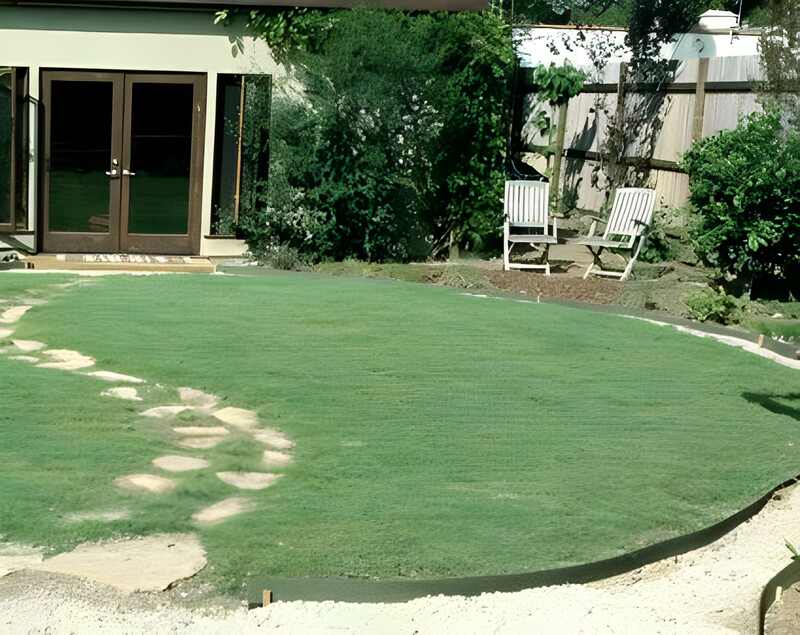
Photo Credit: Susan Harris / Flickr / CC BY 2.0
Unlike most others on this list, buffalograss is a warm-season grass. Its resistance to cold means that it can survive Idaho’s winters, but it will unfortunately go dormant for 7 months out of the year in Idaho’s climate.
Some major advantages it has, however, are its high drought tolerance and low maintenance requirements. It’s a nice hands-off grass if you can’t spend as much time on your lawn as you’d like.
It has a nice gray-green coloration and a fine texture, and grows very quickly in the right conditions. Buffalograss has low shade and foot traffic tolerance, so make sure it gets plenty of sun and you don’t wear it out with too many outdoor activities.
Classification: Warm-season
Spreads By: Stolons
Shade Tolerance: Low
Drought Tolerance: High
Foot Traffic Tolerance: Low
Maintenance Needs: Low fertilization and mowing needs, but requires weed control
Mowing Height: 2 to 3 inches
Potential for Disease: Low
Potential for Pests: Moderate
Soil pH: 6.5 to 7.5
Soil Type: Prefers clay soil, does not tolerate sandy soil
Other Notes: Buffalograss gets its name from the fact that it was a common food source for the Buffalo that once roamed the Great Plains.
FAQ About Idaho Grass Types
Idaho’s Panhandle gets a fairly average amount of rainfall, so it has more flexibility in terms of drought tolerance than areas like Idaho Falls. It also gets a fair amount of sun, so you should have no trouble keeping a grass with low shade tolerance. Kentucky Bluegrass or perennial ryegrass are both good candidates for Northern Idaho and the surrounding area.
Boise is located roughly in Central Idaho. It tends to have hot, dry summers and cool, shady winters, so you’ll need a grass type that can handle both. With this in mind, Kentucky bluegrass is a bit too intolerant of shade to truly thrive. Tall and fine fescue can both handle the conditions Idaho’s capital has to offer with ease, so they’re the winners for Boise.
Idaho Falls is located in Southeast Idaho. It has an average annual rainfall of 16.9 inches and enjoys plenty of sunshine, though not enough to be considered arid or semi-arid. Grasses for this area need to be sun-lovers that can handle the light precipitation.
Buffalograss has very high drought tolerance and, as a warm-season grass, thrives with plenty of sun. If you don’t mind it going dormant, it’s a very good grass type for the Idaho Falls area.
Choose Plant and Grass Varieties for Your Idaho Landscape
When picking out a specific grass type for your Idaho lawn, there are a few things you need to keep in mind. The conditions in your yard are extremely important, as they will determine what kinds of grass you can have and how well they will do. For example, if your lawn gets a lot of sunlight, you should pick one that grows best in full sun.
You also need to consider the amount of work you’re willing to put into your lawn on a regular basis. If you’re trying to create a low-maintenance landscape that you don’t have to put a lot of effort into, consider a grass type that needs less maintenance than most.
If you’re having trouble picking out a new grass type for your lawn, or if you just need general lawn care and landscaping services, contact an Idaho lawn care pro near you. We have trusted lawn care pros in many cities across the state, including Boise, that can handle the lawn’s mowing, trimming, and edging.
Main Photo Credit: F. F. Beale House / Tamanoeconomico / Wikimedia Commons / CC BY-SA 4.0